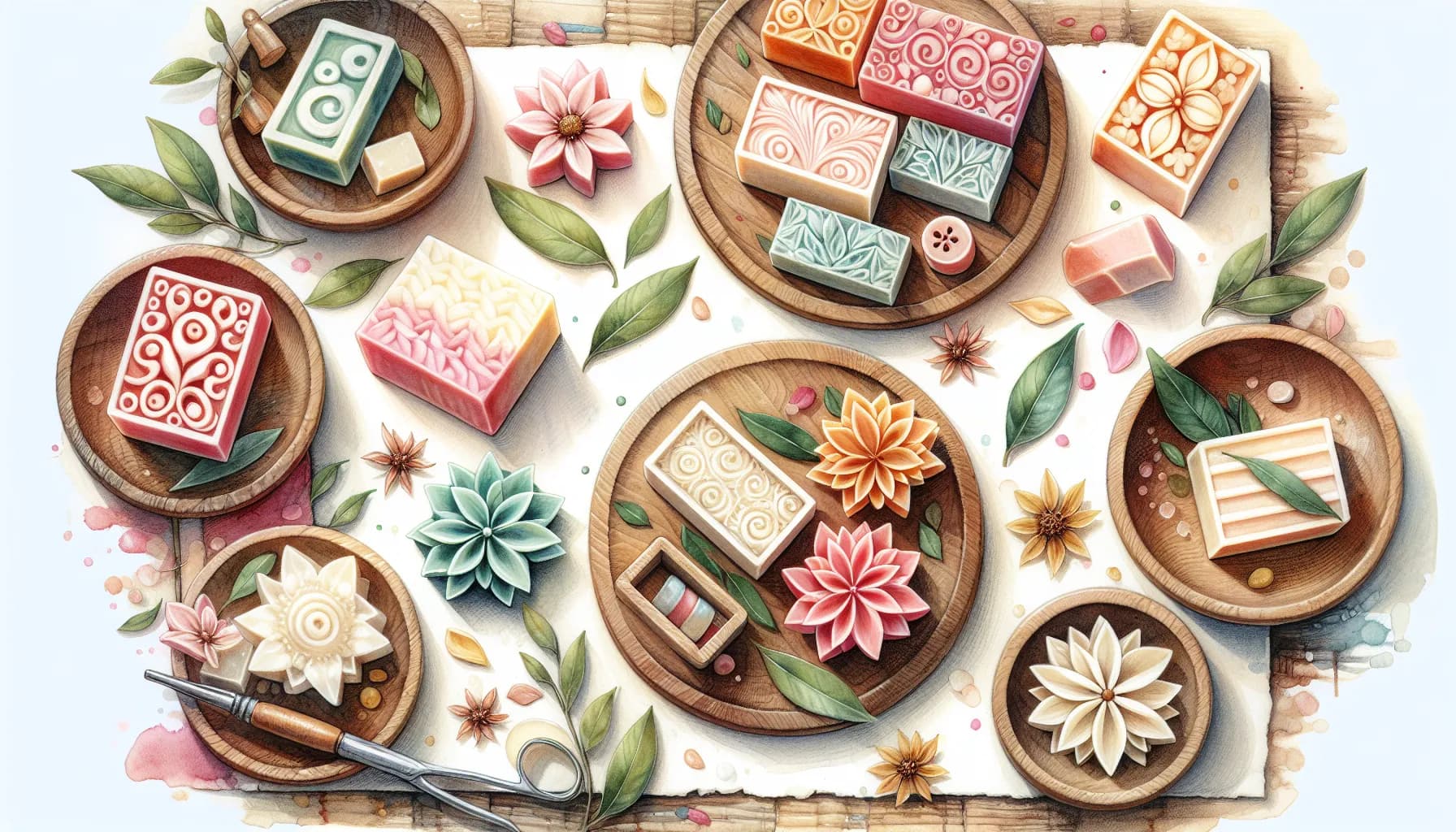
A charming assortment of intricately carved soap bars displayed on rustic plates, adorned with botanical accents, creating a picturesque tableau of artisanal craftsmanship and natural beauty.
Handmade soaps are a blend of art and utility, and mastering the craft allows for both aesthetic satisfaction and practical application. This list offers a thorough guide on various soap molding techniques and designs that can elevate a simple hobby to an artistic venture. Whether you're a beginner hoping to understand basic tools or an entrepreneur looking to refine your methods, this compilation has you covered.
From simple household items to intricate silicone and wooden soap molds, these tools make crafting bespoke soaps accessible. Delve into advanced techniques like embedding objects, layering, and using colorants to add vibrancy and texture to your creations. Meanwhile, natural embellishments such as dried flowers and essential oils not only enhance the aesthetic but also infuse your soaps with delightful scents and skin benefits.
Embark on a creative journey with an extensive list of resources and tips to help you craft uniquely attractive soaps. This set of ideas harnesses both traditional and innovative approaches to soap making, ensuring that each bar is not just practical but also a piece of art.